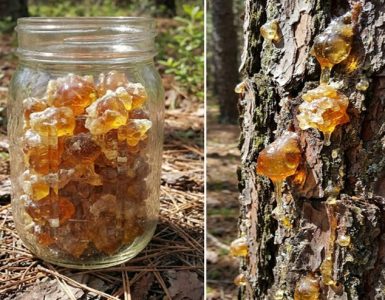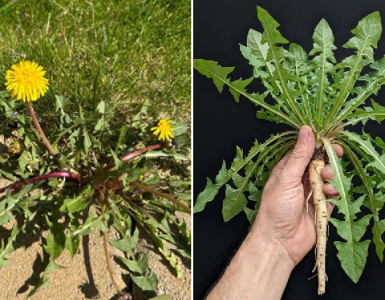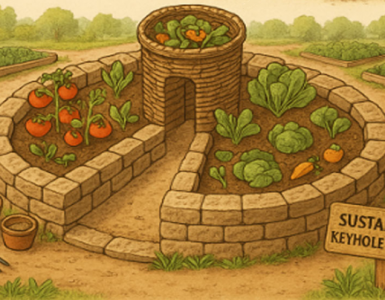If you love the idea of harvesting fresh, homegrown salad greens but don’t have the space for a large garden, growing salad greens in pots is a simple and rewarding solution. Whether you have a small balcony, patio, or windowsill, you can cultivate a variety of nutritious greens right at home. With just a few pots, some good soil, and a little care, you’ll have fresh, delicious salads whenever you want. Here’s the best and easiest way to grow salad greens in pots, even if you’re a beginner.
1.Why Grow Salad Greens in Pots?
Growing salad greens in pots is an ideal option for small spaces, offering a range of benefits:
Compact and Portable: Pots can be placed anywhere with adequate light, making them perfect for balconies, patios, or even windowsills.
Easy to Maintain: Potted plants are easy to water and care for, and you can move them as needed to protect them from harsh weather.
Fresh and Healthy: You can enjoy fresh, pesticide-free greens with minimal effort.
Quick Growth: Many salad greens grow quickly, meaning you can harvest fresh leaves within just a few weeks.
2.Best Salad Greens to Grow in Pots
Here are some of the best types of salad greens to grow in pots, especially for beginners:
Lettuce (Looseleaf, Romaine, Butterhead): Lettuce is one of the easiest greens to grow in pots. Looseleaf varieties grow quickly and are perfect for a “cut and come again” method, allowing you to harvest as needed without pulling up the whole plant.
Spinach: Spinach grows well in pots and is packed with vitamins. It prefers cooler weather, making it a great choice for early spring or fall.
Arugula: Known for its peppery taste, arugula grows fast and thrives in containers. It’s also great for continual harvesting.
Kale: Baby kale leaves can be harvested when young for salads. Kale is hardy and can be grown year-round in many regions.
Mustard Greens: These spicy greens add a kick to salads and grow quickly in containers.
Chard: Rainbow or Swiss chard adds color to your salad garden and grows well in pots, producing large, tender leaves.
Endive and Escarole: These greens offer a slight bitterness, adding complexity to your salad bowl.
3.Choosing the Right Pots
The size and type of pot you choose can affect the success of your salad greens. Here are a few things to keep in mind:
Pot Size: Choose pots that are at least 6-8 inches deep to accommodate the root systems of salad greens. If you’re growing larger greens like kale or chard, use deeper pots of around 10-12 inches.
Drainage: Make sure the pots have drainage holes to prevent water from pooling and causing root rot. If your pots don’t have drainage holes, you can drill some into the bottom or add a layer of pebbles before adding soil.
Material: Terra cotta, plastic, or fabric pots are all good options. Fabric grow bags are especially great for small spaces as they are lightweight and promote healthy root growth.
4.Selecting the Right Soil
For the best results, choose a high-quality potting mix rather than garden soil. Potting mix is lighter and more suitable for container gardening, providing better drainage and root aeration. Salad greens prefer rich, well-draining soil that retains moisture without becoming waterlogged.
To boost growth, you can also mix in some organic compost or slow-release granular fertilizer to give your greens the nutrients they need to thrive.
5.Planting Your Salad Greens
Once you’ve chosen your pots and soil, it’s time to plant your salad greens. Here’s a step-by-step guide:
Step 1: Fill the Pots with Soil
Fill your pots with potting mix, leaving about an inch of space at the top to allow room for watering. If you’re using large containers, you can fill the bottom third with pebbles or old pots to improve drainage.
Step 2: Sow the Seeds or Plant Seedlings
You can either sow seeds directly into the pots or plant seedlings for a quicker start. Sprinkle the seeds lightly across the surface of the soil and cover them with a thin layer of soil (around 1/4 inch). If you’re using seedlings, space them about 4-6 inches apart to give them room to grow.
Step 3: Water Lightly
After planting, water the soil gently but thoroughly. The soil should be moist but not soggy. Salad greens need consistent moisture, so make sure to check the soil regularly and water when the top inch feels dry.
Step 4: Place in a Sunny Spot
Salad greens need about 4-6 hours of sunlight per day. Place your pots in a sunny location, such as a south-facing balcony, patio, or windowsill. If you’re growing greens indoors, consider using grow lights to supplement natural light, especially during the winter months.
6.Caring for Your Salad Greens
Once planted, salad greens are relatively easy to care for. Here are some simple maintenance tips:
Water Regularly: Keep the soil consistently moist, but avoid overwatering. Salad greens have shallow roots, so they need regular watering, especially in hot weather.
Fertilize Occasionally: Every 2-4 weeks, feed your greens with a liquid organic fertilizer or compost tea to promote healthy growth.
Provide Shade in Hot Weather: If you live in a hot climate, your salad greens may appreciate some shade during the hottest part of the day. Use shade cloth or move the pots to a spot with filtered light to prevent the plants from bolting (going to seed) too early.
7.Harvesting Your Salad Greens
Salad greens can be harvested in as little as 3-4 weeks, depending on the variety. For “cut and come again” greens like looseleaf lettuce and spinach, you can begin harvesting when the leaves are about 4-6 inches long. Snip the outer leaves with scissors, leaving the center of the plant intact for continued growth.
For head-forming greens like romaine or butterhead lettuce, wait until the heads are fully formed before harvesting. You can pull up the entire plant or harvest individual leaves if you prefer.
8.Pest Control
Growing salad greens in pots helps reduce the risk of pests, but you may still encounter issues like aphids, slugs, or caterpillars. To control pests naturally:
Inspect plants regularly: Check under leaves for signs of pests and remove any you find by hand.
Use organic pest sprays: Neem oil or insecticidal soap can help deter pests without harming your greens.
Companion planting: Planting herbs like basil or marigolds alongside your greens can help repel pests naturally.
Growing salad greens in pots is an easy and rewarding way to enjoy fresh, homegrown produce, even if you’re short on space. With the right containers, soil, and care, you’ll have a steady supply of nutrient-rich greens that can be harvested just weeks after planting. Whether you’re a seasoned gardener or a beginner, container gardening offers the perfect opportunity to grow your own healthy, delicious salads right at home.






Add comment